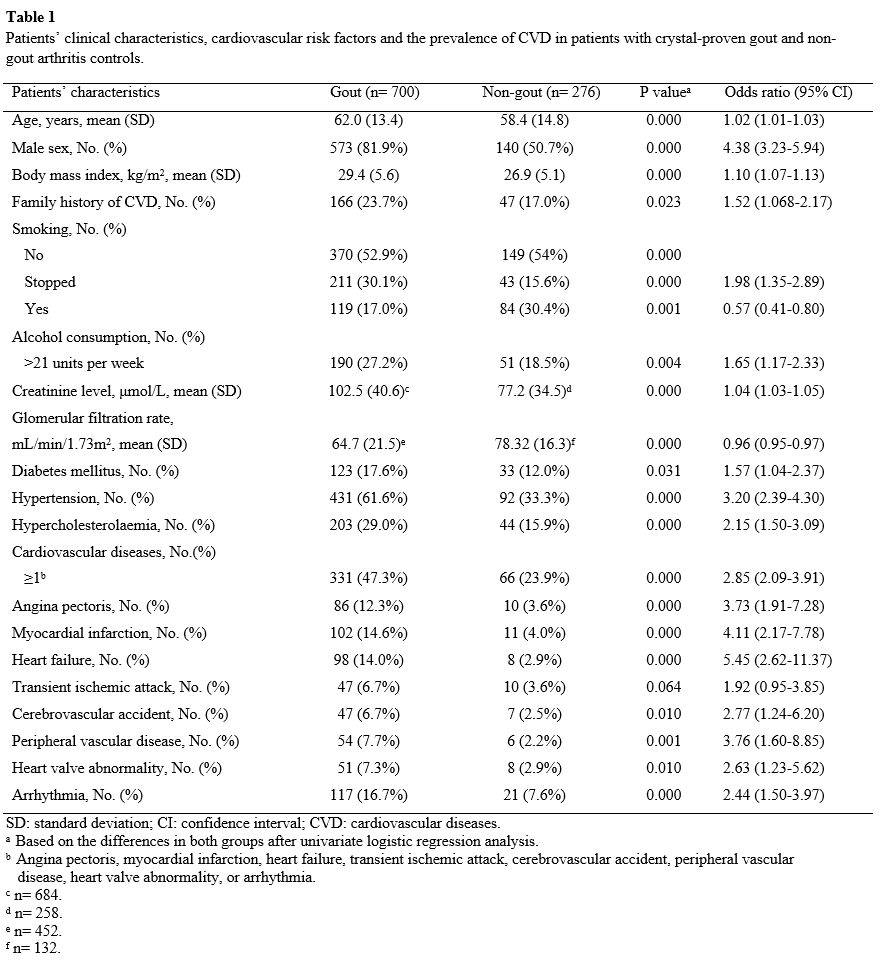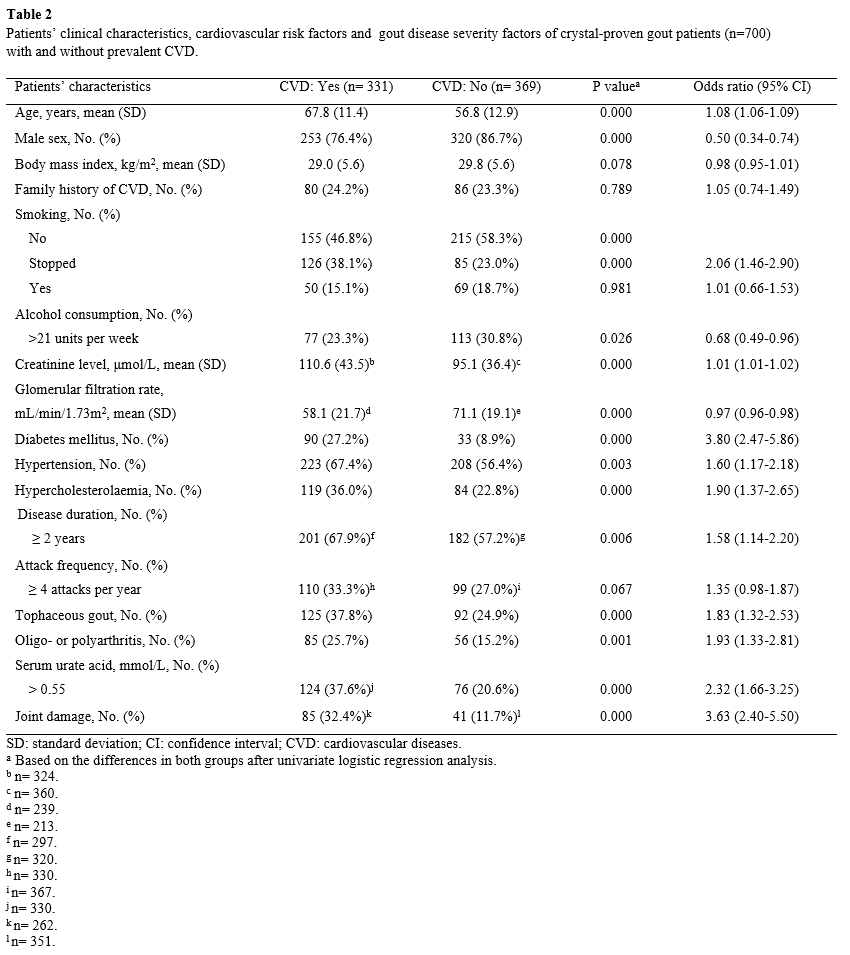Session Information
Date: Tuesday, November 15, 2016
Title: Metabolic and Crystal Arthropathies - Poster II: Epidemiology and Mechanisms of Disease
Session Type: ACR Poster Session C
Session Time: 9:00AM-11:00AM
Background/Purpose: Gout is a health disorder affecting many patients worldwide. Clinical gout studies showed a high prevalence of cardiovascular diseases (CVD), raising the question whether gout is a risk factor for CVD. Our aim was to examine the prevalence of CVD in patients with crystal-proven gout compared to non-gout arthritis controls and to analyze whether disease severity is associated with CVD in gout.
Methods: From July 2011 until May 2016 patients with arthritis referred for diagnosis were consecutively included in the Gout Arnhem-Liemers (GOAL) cohort. Joint fluid analysis was performed in all patients for crystal-proof of gout, controls were negative for crystals. Patients’ characteristics and CVD (angina pectoris, myocardial infarction, heart failure, transient ischemic attack, cerebrovascular accident, peripheral vascular disease, heart valve abnormality, arrhythmia) were collected. In gout patients, gout disease severity factors (disease duration, attack frequency, tophi, affected joints, serum urate acid level, joint damage) were also collected. A ‘case-control’ analysis was performed to compare gout patients with controls for the prevalence of CVD, correcting for confounders. Within gout patients, the association between gout disease severity factors and CVD was analyzed.
Results: In total 700 crystal-proven gout patients and 276 non-gout arthritis controls were enrolled in the ‘case-control’ analysis. Forty-seven percent of 700 gout patients and 24% of 276 controls had one or more prevalent CVD (Table 1). Gout was strongly associated with an increased prevalence of CVD compared to controls, corrected for confounders in a multivariate regression (OR: 3.39; 95% CI, 2.37-4.84). In gout patients, disease duration ≥2 years, tophaceous gout, oligo- or polyarthritis, serum urate acid >0.55 mmol/L and joint damage were univariate risk factors for CVD (Table 2). After adding the cardiovascular risk factors in the multivariate logistic regression model, disease duration ≥2 years (OR: 2.01; 95% CI, 1.31-3.09), oligo- or polyarthritis (OR: 1.66; 95% CI, 1.03-2.66), serum urate acid >0.55mmol/L (OR: 1.73; 95% CI, 1.12-2.68) and joint damage (OR: 2.26; 95% CI, 1.38-3.69) were still independently associated with prevalent CVD.
Conclusion: After adjustment for cardiovascular risk factors, crystal-proven gout was strongly associated with an increased prevalence of CVD compared to controls. Within gout patients, disease severity (disease duration ≥2 years, oligo- or polyarthritis, serum urate acid >0.55 mmol/L and joint damage) were independently associated with prevalent CVD.
To cite this abstract in AMA style:
Disveld IJM, Fransen J, Kienhorst LBE, Janssens HJEM, Zoakman S, Branten AJW, de Gendt CMA, de Jong AJL, Visser H, Janssen M. Crystal-Proven Gout and Disease Severity Factors Influencing the Prevalence of Cardiovascular Diseases [abstract]. Arthritis Rheumatol. 2016; 68 (suppl 10). https://acrabstracts.org/abstract/crystal-proven-gout-and-disease-severity-factors-influencing-the-prevalence-of-cardiovascular-diseases/. Accessed .« Back to 2016 ACR/ARHP Annual Meeting
ACR Meeting Abstracts - https://acrabstracts.org/abstract/crystal-proven-gout-and-disease-severity-factors-influencing-the-prevalence-of-cardiovascular-diseases/


